Here’s a quick cheat sheet before we dive in:
- Tracks are the core file units in DISCO -where you interact with audio, video, and metadata stored in the background.
- Playlists are the most basic folder for sharing and organizing groups of Tracks
- Pages are a type of Playlist design to customize your look.
- Artist Profiles store tracks, images, bio and socials for display on Catalogs and to pre-populate Page designs.
- Channels create a folder structure to organize and group Playlists
- Inboxes provide an effortless way to receive files from others
- Catalogs are curated, easily searchable micro-sites that can host many playlists, tracks, albums, and artist profiles in one place.
Tracks: The foundation of everything in DISCO
Tracks are the core building blocks in DISCO. Every file you upload - whether it's audio, video, or a visual asset - is stored as a Track. This is where playback happens, where metadata is added, and where notes, tags, and artwork live.
You don’t interact with the raw files - you interact with Tracks. From there, you can move them into Playlists, organize them in Channels, tag them for discovery in Catalogs, or present them through Pages.
Multiple file formats - like WAV, AIF, and MP3 - can all be linked to a single Track. You can also nest alternate versions like instrumentals, stems, or even sheet music under the main Track, keeping everything in one tidy place.
Think of Tracks as your digital record sleeve: they hold everything, and you can pull them into as many organizational structures (Playlists, Channels, Catalogs) as needed.
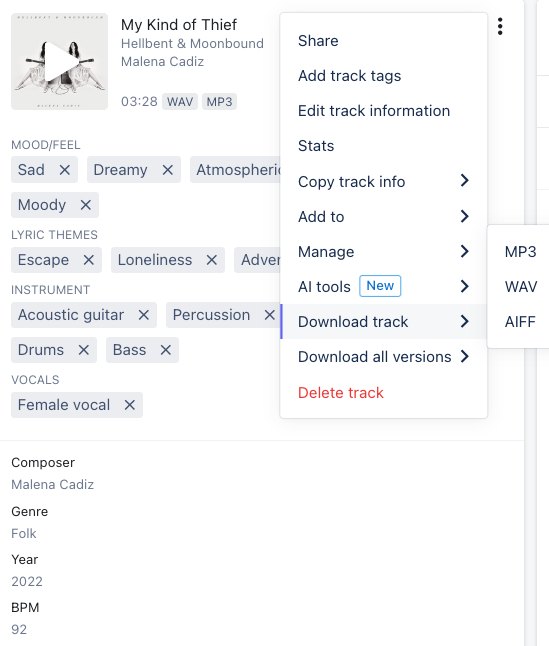
Playlists: DISCO’s building block for storing and sharing files
Playlists let you group Tracks into curated collections - perfect for pitching a vibe, a theme, or a release. They're also handy for comparing mix versions, sorting beats and loops, or keeping multiple versions of a project in one place.
You can add password protection, set expiry dates, and create unique links for each person you share with. Access stats show you who’s listened and when, so you’re not left guessing.
They’re simple to set up, but flexible enough for all kinds of use - whether you're sending a few demos, compiling a catalog, or building something bigger.
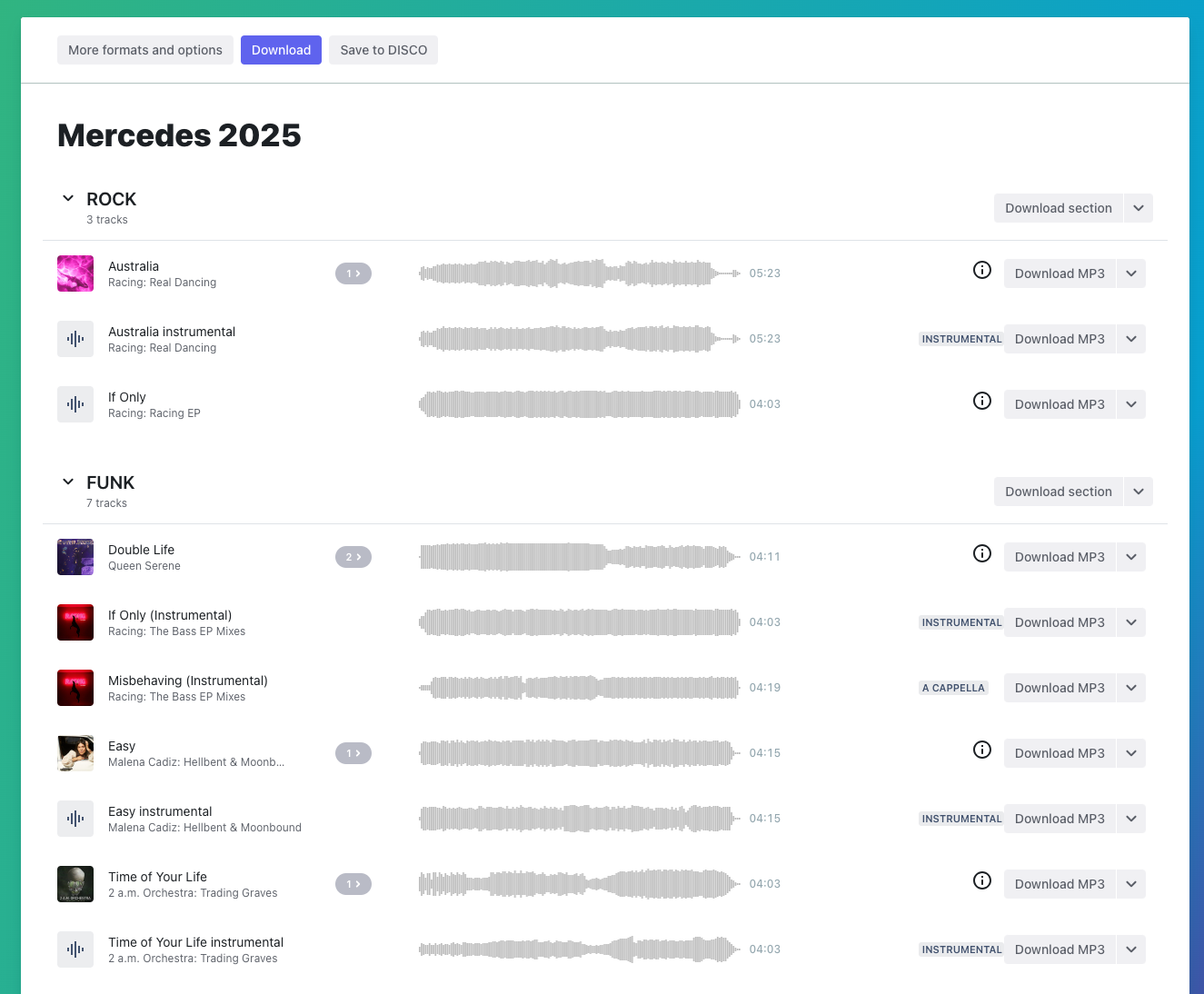
Pages: Shape your Playlist into a story worth sharing
DISCO Pages are simply two design templates that can be applied to a Playlist. Artist Page and Album Page.
Pages let you turn a playlist into something more visual and context-rich. They're great for promoting new releases, artist one-pagers, EPKs, composer reels, and or business presentations.
You can add bios, press releases, artwork, videos, images, social media links, and custom sections to help tell the full story.
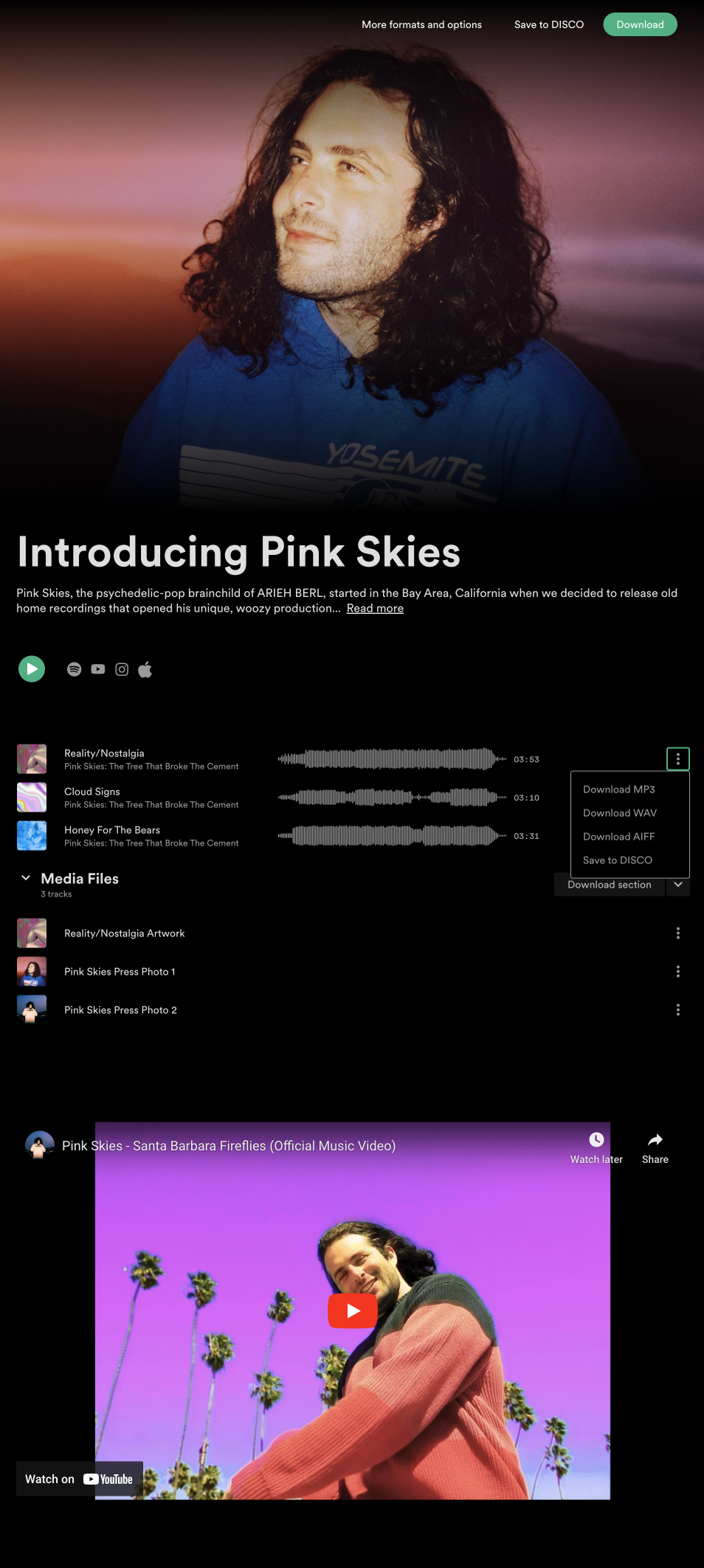
Artist Profiles: The hidden link behind your tracks and Pages
Artist Profiles in DISCO automatically connect all the Tracks related to a specific artist - as long as the artist metadata field matches across those Tracks.
Each Artist Profile can be edited to include:
- An artist image
- A bio
- Social media or website links
When you design a DISCO Page, you’ll need to select an Artist Profile. To save you time, the Page will pull in the artist’s image, bio, and social links automatically - but you can always update or override these for each individual Page.
The most confusing part about Artist Profiles?
Artist Profiles aren’t shareable on their own - they support the rest of your presentation tools, especially Pages and DISCO Catalogs. But they’re a big part of what makes your content feel cohesive and professional across everything you share.
They’re not something you create manually. They’re generated automatically the moment you fill in the artist field on a Track. Each unique artist name creates a new profile, and every Track with that same name gets linked to it.
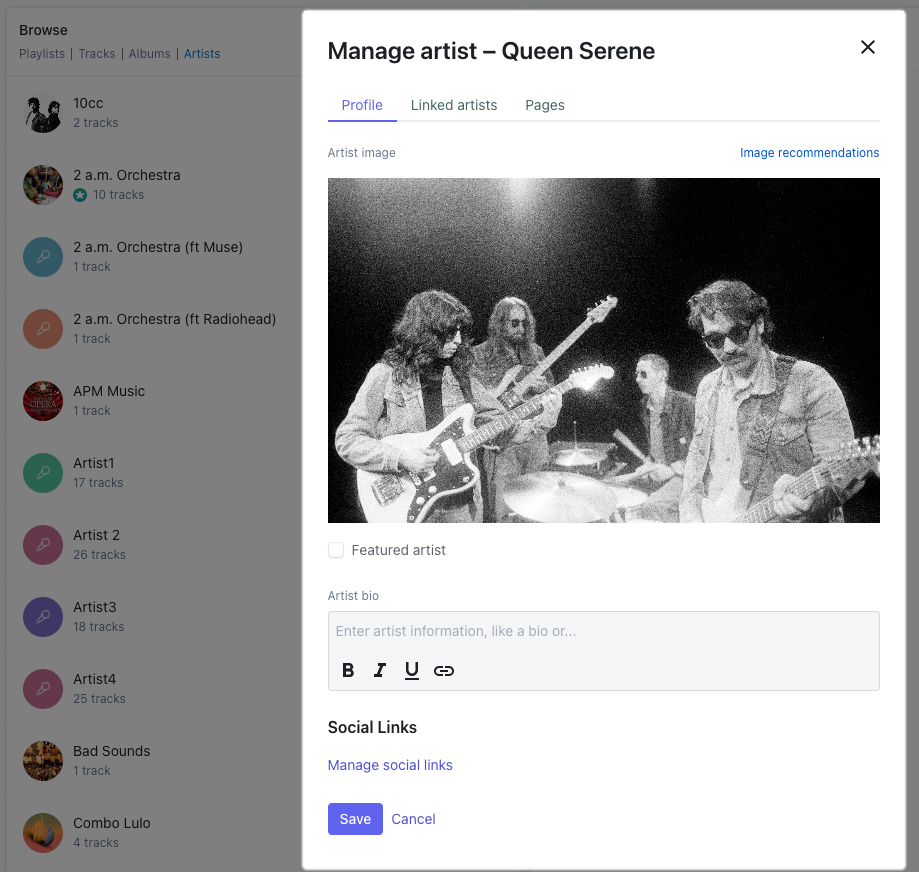
Channels: Keep your files (and team) organized
Channels work like folders and help you keep everything structured - whether that’s internally with your team, across projects, or alongside collaborators. You can set them up in whatever way makes sense:
- A catalog Channel organized into artist folders
- A pitch log Channel broken out by month
- An active projects Channel with folders for each show, film, or campaign you’re working on
Whatever suits your workflow.
If you’re working with people in other DISCO accounts - like a label, manager, or publisher - Shared Channels are a great way to stay connected. Instead of constantly sending links back and forth, you can give them access to a full Channel inside their own account. Any updates you make show up in real time - no emails or re-uploads needed.
Shared Channels are great for:
- Artist managers and artists working across accounts
- Labels sending new releases to PR teams or sync agents
- Publishers and sub-publishers working on each other’s catalogs
You can update or remove access at any time, so you stay in control while keeping everyone in the loop.
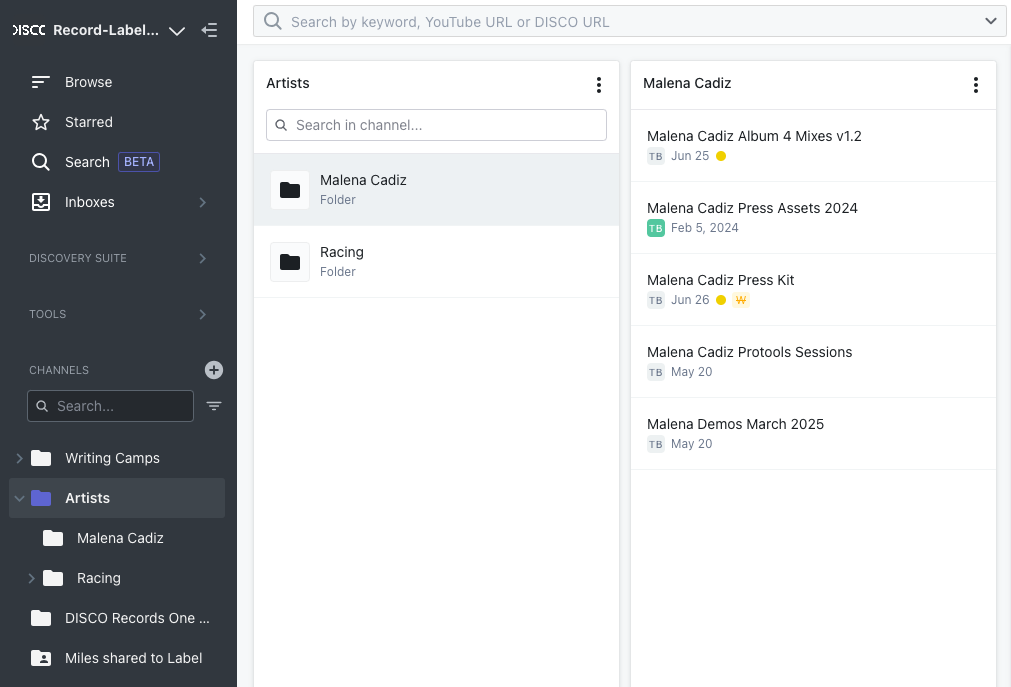
Inboxes: A simple way to collect files
Inboxes make it easy for people to send you files - no DISCO account needed, and no back-and-forth with emails, attachments, expiring links, or downloads. Just a clean upload page where they can drop files straight into your DISCO Inbox.
It’s perfect for gathering demos, press materials, mix versions, or anything else people need to send your way. Everything lands in one place, already organized and ready to work with.
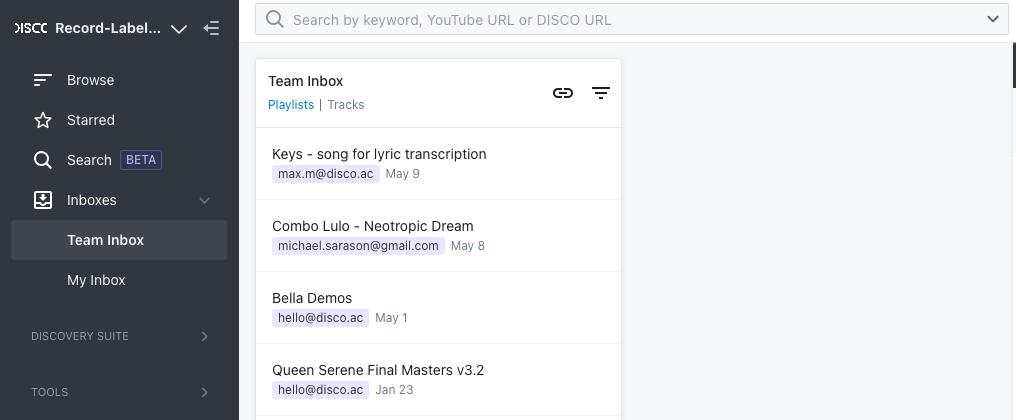
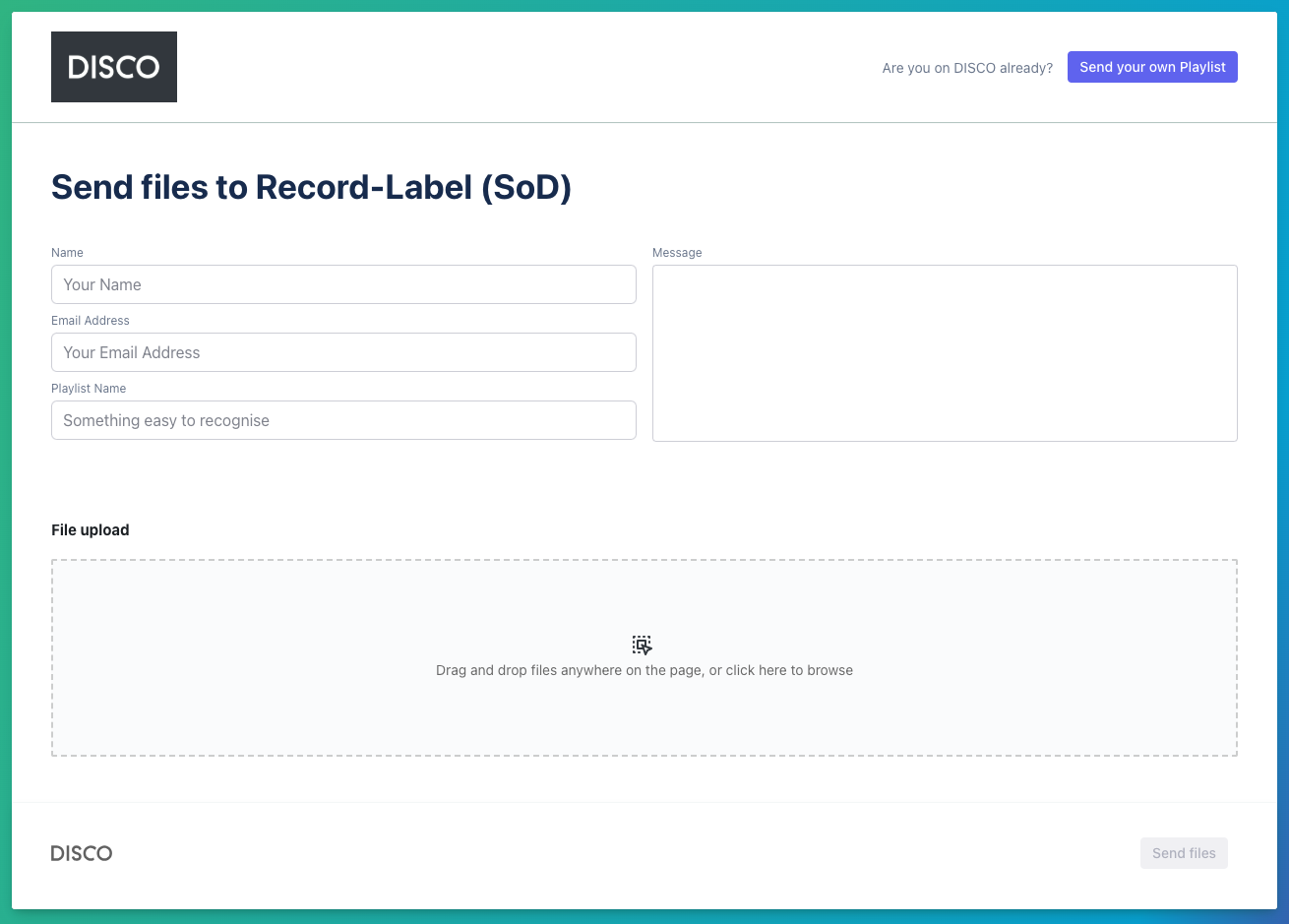
Catalogs: Help others find what they need - fast
Catalogs let clients and music supervisors easily search through huge amounts of content in your DISCO.
You choose what to include and feature - all the tracks in a specific Channel, Playlists, orAlbums - and DISCO’s auto-tagging makes everything instantly searchable, along with any other metadata you've added. It gives your collaborators 24/7 access to the parts of your catalog you want them to see.
Tracks are matched with Artist Profiles (mentioned above) automatically to highlight all the work associated with each artist.
Catalogs are especially useful for partners or clients who need a reliable way to browse what you’ve got, on their own time.
If you opt in, your Catalog can also be visible to verified Music Supervisors on DISCO, meaning your tracks will appear in their search results across the platform.

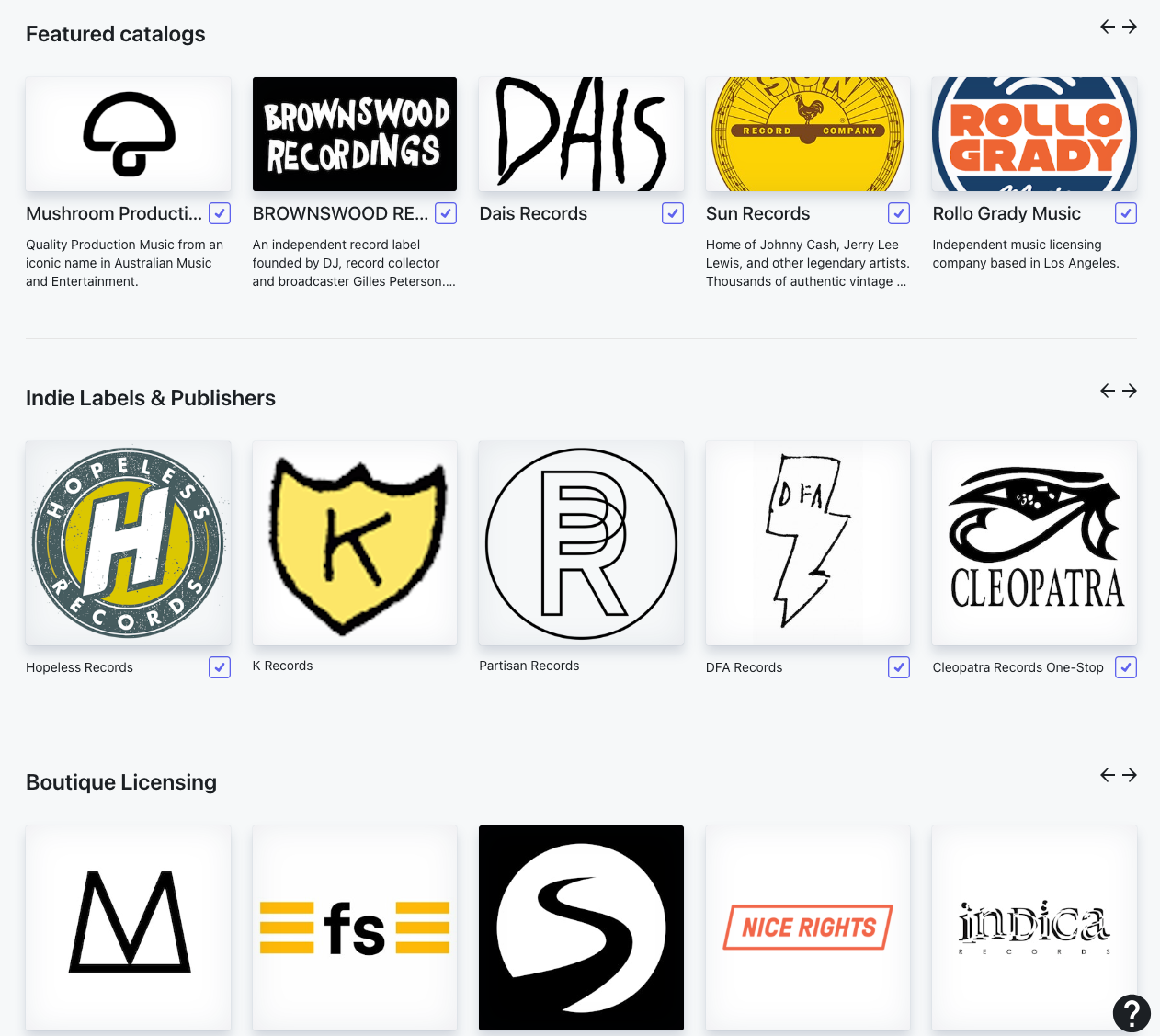
How it all fits together
Each part of DISCO is designed to help you move faster, stay organized, and make your music easier to access, hear, and work with. Here’s how they might work together:
- Upload files as Tracks - playback, add metadata, share.
- Use Inboxes to receive tracks or materials from collaborators
- Build Playlists to group tracks and share streamable/downloadable links
- Turn Playlists into Pages to elevate the design and include bio, images, videos, socials on one link.
- Use Channels to build a folders structure and keep Playlists organized
- Share DISCO Catalogs - where clients can search curated collections of playlists, tracks, albums and artist profiles.


